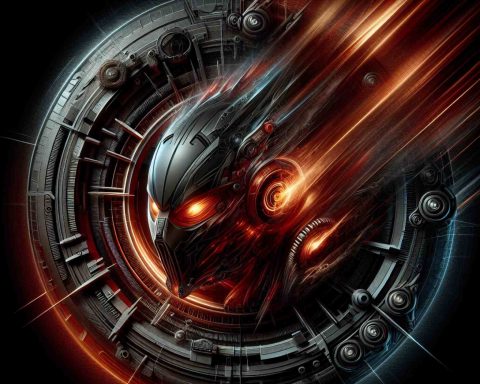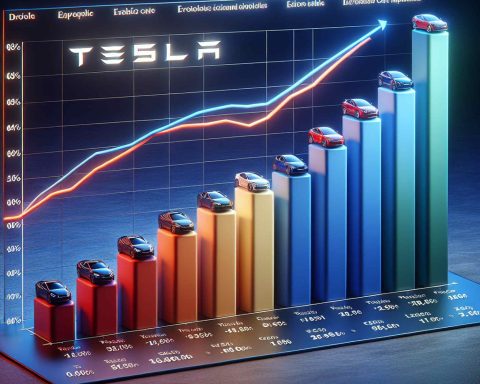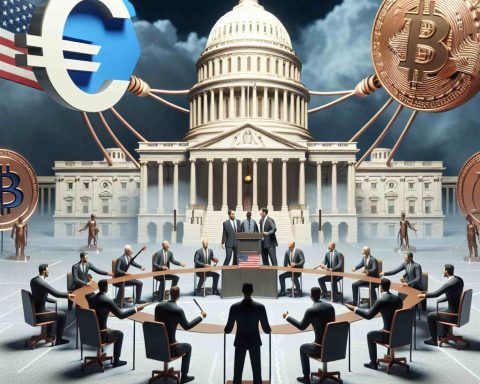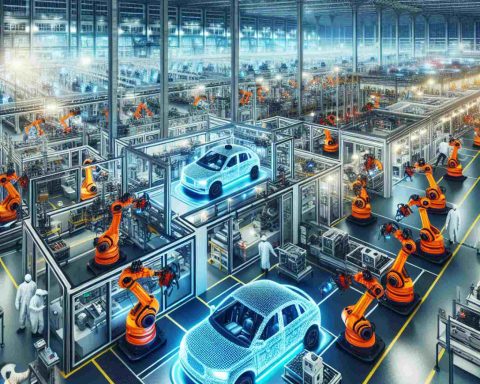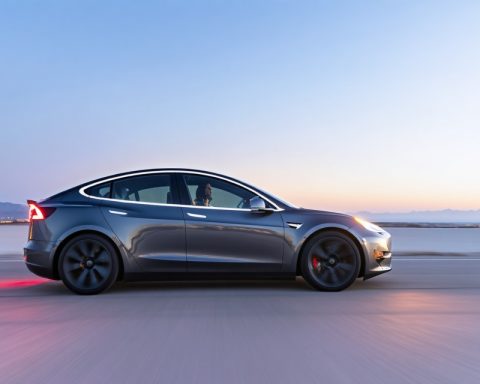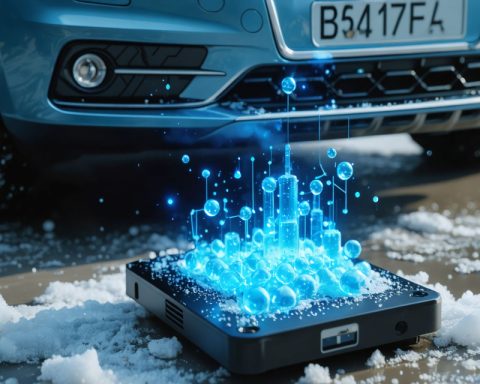- Maryland’s electric vehicle infrastructure faces significant problems, with numerous broken or dysfunctional charging ports.
- The state’s commitment to phasing out gasoline vehicles by 2035, part of the Advanced Clean Cars II program, is hindered by poor execution.
- Financial investments by utility companies like BGE and Pepco in charging stations have fallen short of expectations.
- The Electric Vehicle Charging Reliability Act of 2023 demands 97% uptime for chargers, but accountability is lacking, as reflected in ongoing service failures.
- Grassroots surveys reveal stark contrasts in reliability between Tesla’s 99.6% availability and other providers’ poor operational rates.
- Utilities seek more funding despite existing infrastructure’s inadequacy, while Governor Moore’s executive order delays penalties for unmet ZEV goals.
- Core improvements and accountable stakeholders are essential for realizing Maryland’s Zero-Emission Vehicle aspirations.
Maryland’s bold commitment to a cleaner, greener future unravels as a critical issue plagues its electric vehicle infrastructure: the chargers are broken. Nearly two years after Maryland’s ambitious pledge under Governor Wes Moore to phase out gasoline vehicle sales by 2035, the plan’s successful execution looks as shaky as the network it relies on.
The vision was earnest and the promises grand when Maryland joined California’s Advanced Clean Cars II program. The pledge aimed to cut greenhouse gas emissions dramatically, but the reality of execution veers away from this lofty goal. The underlying problem isn’t solely about the number of electric vehicles on the road — it’s about the charging ports meant to power them.
A significant portion of Maryland’s charging stations, built with substantial financial backing from utility giants, stand as monuments to poor execution and broken promises. These installations, part of a now-faltering pilot program initiated in 2018, were set up to create a seamless transition to electric vehicles. Millions were invested in public charging stations by companies like BGE and Pepco, but expectations have turned into disappointments.
Instead of reliability, drivers have found these chargers to be often dysfunctional, resembling relics rather than cutting-edge infrastructure. Much to the dismay of EV owners, many utilities handed daily operations to third-party contractors, creating a disconnect in accountability. Drivers left dealing with malfunctioning chargers face dead ends—literally and figuratively—as they attempt to navigate ineffective customer service channels.
A dismayed General Assembly enacted the Electric Vehicle Charging Reliability Act in 2023, a legislative push for transparency and dependability in the EV network. It aimed for a 97% uptime, threatening penalties against failures to meet the requirements. Yet, two years on, accountability remains a mirage; the Public Service Commission still awaits comprehensive reports. In the meantime, the only things skyrocketing are driver frustration and skepticism.
Amid this chaos, a grassroots effort emerged—a devoted group of drivers, including myself, embarked on a survey to gauge the true state of fast chargers in Maryland. We canvassed over 300 sites, testing a thousand ports. The results? Beyond enlightening. Tesla—a non-utility player—boasted a near-perfect 99.6% availability of its fast charging ports. Contrast this with BGE’s dismal 33% operational rate and Delmarva Power’s worst-performing 31% on the Eastern Shore.
Despite this infrastructure inadequacy, utilities now seek additional funding to perpetuate an inefficacious system. Instead of visionary high-power stations like those of Tesla’s, offering quick, reliable service often in vibrant, convenient locations, many state-issued ports languish with inadequate capacity in sparsely visited parking lots.
Governor Moore, acknowledging these foundational flaws with an executive order delaying ZEV goals’ penalties, inadvertently underscored the systemic failures that continue to beleaguer Maryland’s electric vision. The infrastructure he cited as deficient was given ample time and financial resources to mature but fell short of delivering meaningful utility.
The takeaway? The Public Service Commission must close this chapter of drawn-out inadequacy, shifting resources to models that have proven effective. For Maryland to reach its Zero-Emission Vehicle aspirations, stakeholder accountability and tangible infrastructure improvements are imperative. Otherwise, Maryland may find its lofty environmental ambitions remain nothing more than barren promises—as idle and uncharged as the electric stations littered across the state.
Maryland’s Electric Vehicle Charger Crisis: How Can It Be Fixed?
Maryland’s ambitious environmental goals, aimed at reducing greenhouse gas emissions through widespread electric vehicle (EV) adoption, face a significant hurdle: the state’s electric vehicle charging infrastructure is riddled with issues. Despite substantial investments from companies like BGE and Pepco, and legislative efforts such as the Electric Vehicle Charging Reliability Act, Maryland’s EV charging network continues to fall short of expectations. Let’s dive deeper into this pressing issue and explore actionable solutions.
Understanding the Current State
1. Infrastructure Failures: Maryland’s EV charging stations have been plagued by unreliability. EV owners often encounter broken or malfunctioning chargers, leading to frustration and a lack of trust in the system intended to support a transition to decarbonized transportation.
2. Accountability Gaps: Much of the EV network’s management was outsourced to third-party contractors, leading to murky accountability. This disconnect between utility companies, contractors, and users has compounded the operational shortcomings of the chargers.
3. Legislative Shortcomings: Although the Electric Vehicle Charging Reliability Act set forth a goal of 97% uptime for chargers, enforcement and transparency have lagged, leaving significant room for improvement.
Insights & Predictions
– Tesla’s Model of Success: Tesla’s Supercharger network stands out as a model of reliability and accessibility, boasting a 99.6% availability rate. Their choice of location—often in well-trafficked areas—and high-power stations underline the stark contrast between private and public sector achievements in the realm of EV infrastructure.
– Market Trends: The trend is shifting towards more user-friendly and high-capacity charging stations that are easily accessible and regularly maintained. Public entities could consider adopting similar practices to those of Elon Musk’s company, potentially collaborating with private firms to enhance infrastructure quality.
How-To Steps & Life Hacks
– Self-Help for EV Owners: Until Maryland’s infrastructure improves, EV owners can take proactive steps such as using apps like PlugShare to locate reliable chargers and reporting outages or issues to utility companies and through relevant app feedback systems.
– Maximize Battery Life: To reduce dependency on charging stations, follow key practices such as planning charging around regular trips, driving at moderate speeds, and avoiding excessive use of battery-draining features like air conditioning.
Real-World Use Cases
1. Community Involvement: A grassroots campaign successfully surveyed over 300 charging sites, demonstrating the power of community-driven initiatives in identifying and addressing EV infrastructure issues.
2. Utility Collaborations: Some states have seen success by partnering with private companies for infrastructure development, suggesting a potential path forward for Maryland.
Actionable Recommendations
– Enhance Accountability: Establish clear lines of responsibility between utility companies and third-party contractors to ensure quick resolution and maintenance of charging stations.
– Adopt Successful Models: Learn from Tesla’s Supercharger strategy—focus on location convenience, high capacity, and regular maintenance.
– Seek Legislative Strengthening: The Electric Vehicle Charging Reliability Act requires stronger enforcement mechanisms to ensure compliance and transparency.
– Public and Private Cooperation: Encourage partnerships between the state and EV leaders to leverage their infrastructure expertise and create a more robust network.
For more information on advancing sustainable transportation and similar initiatives, visit Maryland Energy Administration.
Conclusion
Maryland’s electric vehicle charging challenges reveal critical areas requiring swift improvements to meet the state’s environmental goals. By focusing on accountability, learning from successful models like Tesla, and fostering public/private collaborations, Maryland can steer towards a more effective and dependable EV infrastructure. Without these changes, Maryland may struggle to achieve its vision of a cleaner, greener future.

